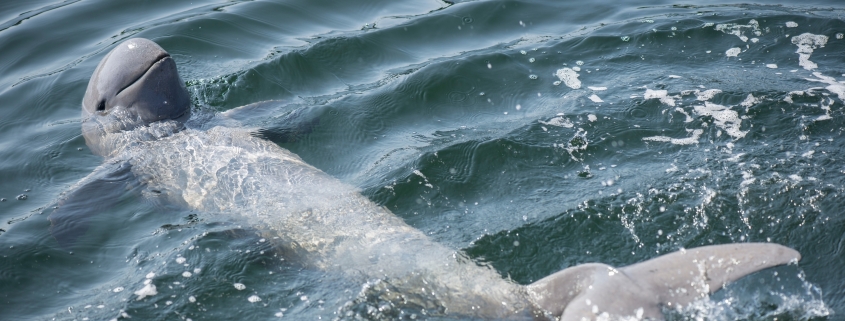Snubfin dolphins call Roebuck Bay home
A community of snubfin dolphins has taken up residency in Roebuck Bay, according to a new study investigating the species’ use of the area.
The study, led by Edith Cowan University, confirms the presence of the resident dolphin community in Yawuru Nagulagun (Roebuck Bay) in the northwest of Western Australia and provides the first insights into how they use the area.
Researchers from Edith Cowan University, WA’s Department of Biodiversity, Conservation and Attractions, and Yawuru Native Title Prescribed Body Corporate collaboration combined data from multiple contributors to analyse the dolphins’ behavioural patterns.
Australian snubfin dolphins are a species with a limited distribution, vulnerable conservation status, and high cultural value and understanding how they use this area could help inform future management for their long-term conservation.
The researchers reviewed 11 years of data obtained from researchers, rangers and citizen scientists, including through WAMSI’s Kimberley Marine Research program, to determine the ranging patterns and site fidelity of snubfin dolphins in the region.
The combined dataset was more than four and a half times larger than the single largest study completed previously and produced results that could not have been obtained with the data from any single study alone.
Lead author Alexandra D’Cruz from Edith Cowan University, said the results highlighted the importance of Yawuru Sea Country as a high-quality habitat that offered abundant resources, and shelter from predators.
“These important insights contribute new information for the continued conservation and management of snubfin dolphins at the broader species level, as well as more specifically for the local population,” Ms D’Cruz said.
The findings could improve the potential to detect changes in the population and respond to pressures over decadal timeframes.
“For long-living species such as marine mammals, having sufficient data on ranging patterns and space across a broad timescale which is suitable for population management and conservation can be difficult,” she said.
“This approach could be applied to improve conservation management strategies for other cryptic, data deficient, vulnerable, and long-lived species.”
We would like to thank the Traditional Owners of the land and sea on which this study was based on, the Yawuru people. We would also like to thank those involved with the data collection through WAMSI’s Kimberley Marine Research program.

